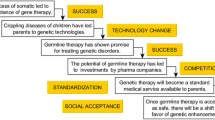Abstract
The aim of this paper is to engage with the interplay between representational content and design in chemistry and to explore some of its epistemological consequences. Constraints on representational content arising from the aspectual structure of representation can be manipulated by design. Designs are epistemologically important because representational content, hence our knowledge of target systems in chemistry, can change with design. The significance of this claim is that while it has been recognised that the way one conveys information makes a difference to the inferences one can draw from representations in spite of the invariance of informational content, the present paper argues that in chemistry and biochemistry it is often the case that designs have cognitive priority relative to informational content.
Similar content being viewed by others
Notes
I draw here on Lopes (1996, pp. 3–4).
By “abstract representation”, I do not mean “abstract direct representation”—a strategy of theory construction Weisberg (2007) contrasts with the “indirect” representation of phenomenon via modelling. The kinds of abstract representations I refer to here are model-based representations.
However, the medium of representation will impact on aspectual structure here.
Nor is Goodman interested in the use of symbols in linguistic pragmatics—the use of symbols in illocutionary acts because these have little to do with “the nominative or predicative aspect of symbols, not their assertive or interrogative force, and [I] have taken characters more as predicates or labels than as sentences” (ibid, pp. 154–155).
See also Woody (2004, p. 781), where she draws in John Haughland’s idea of a “scheme in which a broad set of possible contents can be represented by a corresponding set of representations, themselves governed by unified sets of rules for both generation and application”.
References
Carson, M.: Ribbon models of macromolecules. J. Mol. Graph. 5(2), 03–106 (1987)
Carson, M., Bugg, C.: Algorithm for ribbon models of proteins. J. Mol. Graph. 4(2), 121–122 (1986)
Chang, H., Fisher, G.: What the ravens really teach us: the intrinsic contextuality of evidence. In: Twining, William, Dawid, Philip, Vasilaki, Dimitra (eds.) Evidence, Inference and Enquiry—Proceedings of the British Academy, vol. 171, pp. 345–370. Oxford University Press, Oxford (2011)
Connolly, M.L.: Solvent-accessible surfaces of proteins and nucleic acids. Science 221, 709–713 (1983)
Contessa, G.: Scientific representation, interpretation, and surrogative reasoning. Philos. Sci. 74, 48–68 (2007)
Curl, R.F., Smalley, R.: Probing C60. Science 242, 1017–1022 (1988)
Goodman, N.: Languages of Art: An Approach to a Theory of Symbols. Oxford University Press, London (1976)
Goodwin, M.: Visual representations in science. Philos. Sci. 76, 372–390 (2009)
Hesse, M.B.: Models and Analogies in Science, 2nd edn. University of Notre Dame Press, Notre Dame (1970)
Hoffman, R., Laszlo, P.: Representation in chemistry. Angew. Chem. Int. Ed. 30(1), 1–16 (1991)
Kermack, W.O., Robinson, R.: An explanation of the property of induced polarity of atoms and an interpretation of the theory of partial valencies on an electronic basis. J. Chem. Soc. 121, 427–440 (1922)
Klein, U.: Experiments, Models, Paper Tools: Cultures of Organic Chemistry in the Nineteenth Century. Stanford University Press, Stanford (2003)
Knuuttila, T.: Modelling and representing: an artefactual approach to model-based representation. Stud. Hist. Philos. Sci. 42, 262–271 (2011)
Kroto, H.: Space, stars, C60, and soot. Science 242, 1139–1145 (1988)
Kulvicki, J.: Images. Routledge, New York (2014)
Lopes, D.: Understanding Pictures. Clarendon Press, Oxford (1996)
Mezey, P.G.: Shape in Chemistry: An Introduction to Molecular Shape and Topology. Wiley, Hoboken (1993)
Mitchell, A.S., Spackman, M.A.: Molecular surfaces from the promolecule: a comparison with Hartree–Fock ab initio electron density surfaces. J. Comput. Chem. 21(11), 933–942 (2000)
Morffew, A.J.: Editorial. J. Mol. Graph. 1(1), 3–4 (1983)
Nye, M.J.: From Chemical Philosophy to Theoretical Chemistry—Dynamics of Matter and Dynamic of Disciplines, 1800–1950. University of California Press, Berkeley (1993)
Perini, L.: Truth in pictures. Philos. Sci. 72, 262–285 (2005)
Richardson, J.S.: Early Ribbon Drawings of Proteins. Nat. Struct. Biol. 7(8), 624–625 (2000)
Richardson, J.S., Richardson, D.C.: Doing molecular biophysics: finding, naming, and picturing signal within complexity. Annu. Rev. Biophys. 42, 1–28 (2013)
Schummer, J.: Aesthetics of chemical products: materials, molecules, and molecular models. Hyle 9(1), 77–108 (2003)
Teschner, M., Henn, C., Vollhardt, H., Reiling, S., Brickmann, J.: Texture mapping: a new tool for molecular graphics. J. Mol. Graph. 12, 98–105 (1994)
Vorms, M.: Representing with imaginary models: formats matter. Stud. Hist. Philos. Sci. 42, 287–295 (2011)
Vorms, M.: Formats of representation in scientific theorizing. In: Humphreys, P., Imbert, C. (eds.) Models, Simulations, and Representations, pp. 250–273. Routledge, New York (2012)
Weisberg, M.: Who is a modeler? Br. J. Philos. Sci. 58, 207–233 (2007)
Woody, A.I.: Putting quantum mechanics to work in chemistry: the power of diagrammatic representation. Philos. Sci. 67(Proceedings), S612–S627 (2000)
Woody, A.I.: More telltale signs: what attention to representation reveals about scientific explanation. Philos. Sci. 71, 780–793 (2004)
Acknowledgements
I would like to thanks the participants of the 20th Annual Symposium of the International Society for the Philosophy of Chemistry at Florida Atlantic University for their questions and comments, especially Ann-Sophie Barwich and Tami Spector.
Author information
Authors and Affiliations
Corresponding author
Rights and permissions
About this article
Cite this article
Fisher, G. Content, design, and representation in chemistry. Found Chem 19, 17–28 (2017). https://doi.org/10.1007/s10698-017-9275-6
Published:
Issue Date:
DOI: https://doi.org/10.1007/s10698-017-9275-6




